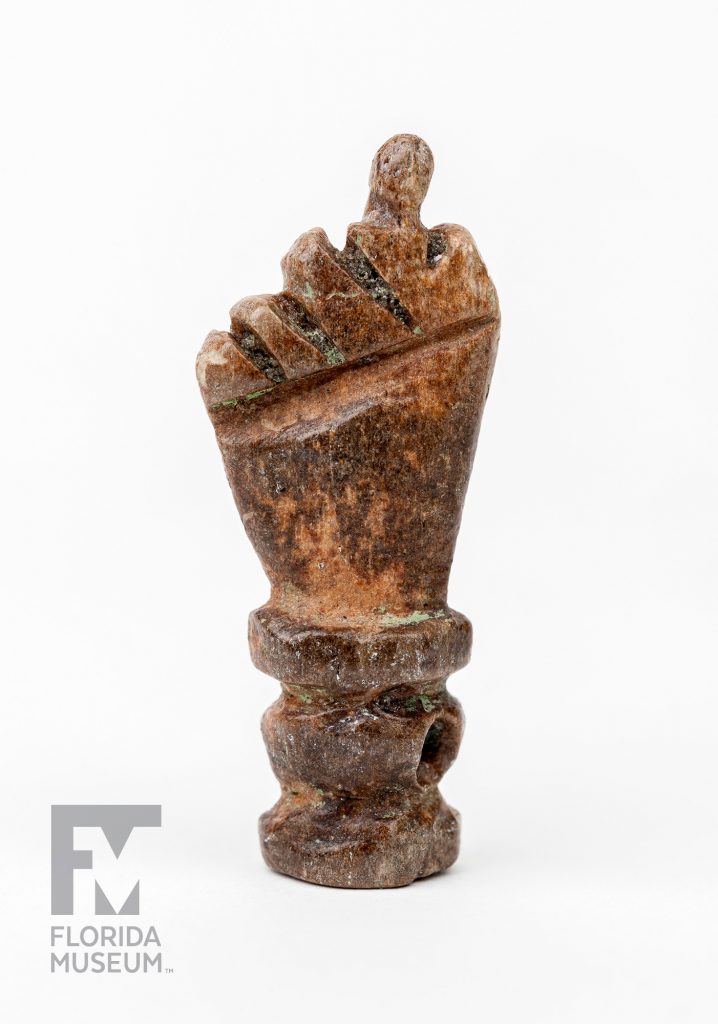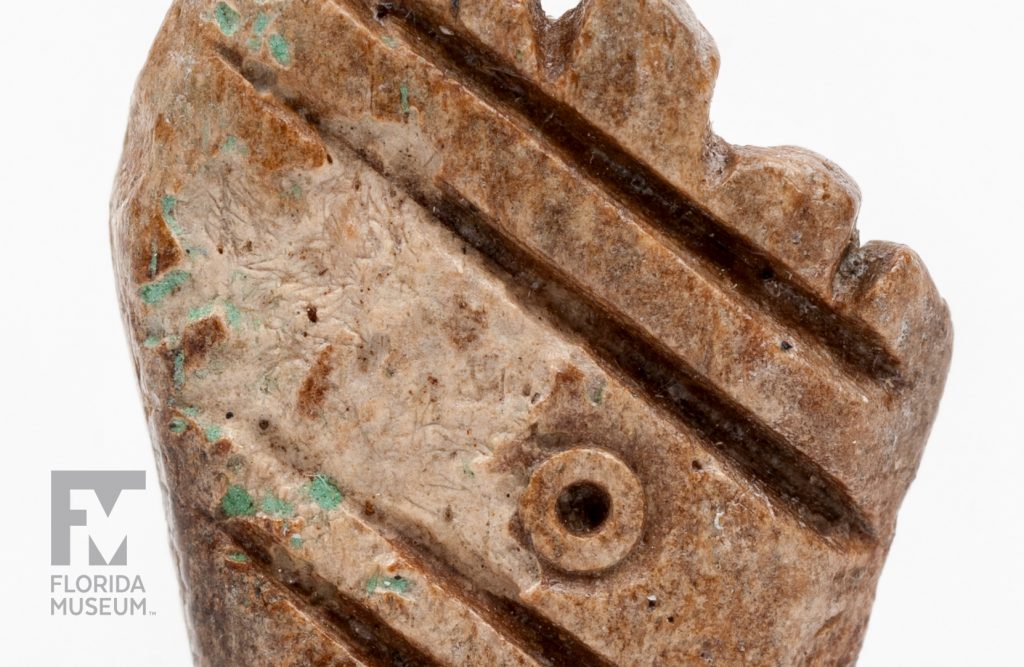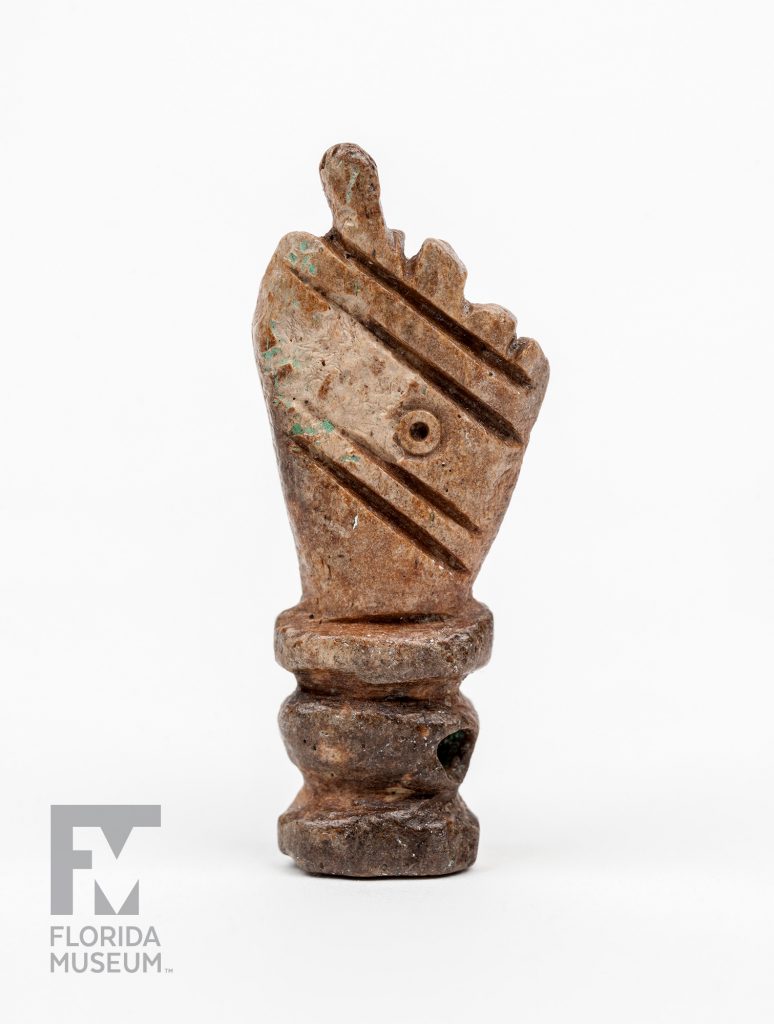Archaeologists excavated this small, fist-shaped ornament from the first settlement site of St. Augustine. A Spanish colonist may have made it as a protective amulet for one of the first babies born in 16th century Florida.
Summary
Bone Figa
From St. Johns Co., Florida
Dates to AD 1565
Collection
Story
Figas were protective amulets that were often given to infants to ward off the evil eye and offer other protections. This particular one was found at the Fountain of Youth Archaeological Park in St. Augustine, Florida. This is the location of the initial settlement of St. Augustine, occupied from September 1565 through the spring of 1566.
This figa was made of bone and at one time was coated in black, likely to make it look more like jet*, which is what most figas were made of. While it’s uncertain who exactly this particular figa was made for, it’s possible that it was for little Martín de Argüelles who is the first documented European born in what is now the United States.
Gifford Waters
Collection Manager, Historical Archaeology**
Florida Museum of Natural History
Exhibit
On display Sept. 23, 2017-Jan. 7, 2018, Rare, Beautiful & Fascinating: 100 Years @FloridaMuseum celebrated the Museum’s rich history. Each Museum collection was asked to contribute its most interesting items and share the stories that make them special. Though the physical exhibit is closed, this companion website remains online, providing an opportunity to experience the Florida Museum’s most treasured specimens.
Exhibit Area: Objects Tell Stories
Theme: Spanish Colonial Archaeology
 Want to see more? Explore more than 300 breathtaking color photos of plants, animals, fossils and cultural heritage materials from the Florida Museum of Natural History’s collections in the award-winning book All Things Beautiful available from the University Press of Florida.
Want to see more? Explore more than 300 breathtaking color photos of plants, animals, fossils and cultural heritage materials from the Florida Museum of Natural History’s collections in the award-winning book All Things Beautiful available from the University Press of Florida.
*The audio recording uses the word “jade” here in error; the text has been corrected.
**This title was accurate at the time the exhibit was on display in 2017. Please visit the collection website to verify current staff and student information.


